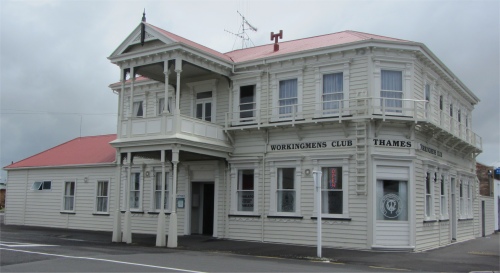 Thames Workingmen's Club |
She lived in Auckland, and like many of those city dwellers, used the Coromandel Peninsula as a bolt hole for rest and relaxation. Originally she kept her caravan on the gorgeous east side of the peninsula, but nowadays she couldn't face the long drive across the winding, hilly road to the east, so she had her caravan moved to Thames.
"I was hoping to drive back to Auckland today," she told me, "but my son says it is still quite bad there and lots of things are blowing across the roads, so I might leave it until tomorrow."
Dodging the showers, I washed all my pots and pans thoroughly for the return to the car rental company tomorrow. After putting everything that moved into the washing machine, I nipped off for a shower. Damn and blast, my shampoo was still sitting in the showers at Coromandel.
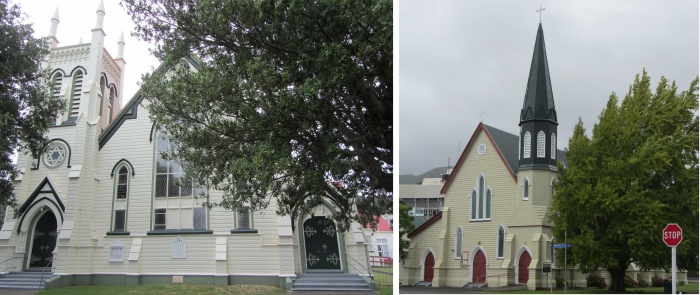 St James Union Church and St George's Anglican Church |
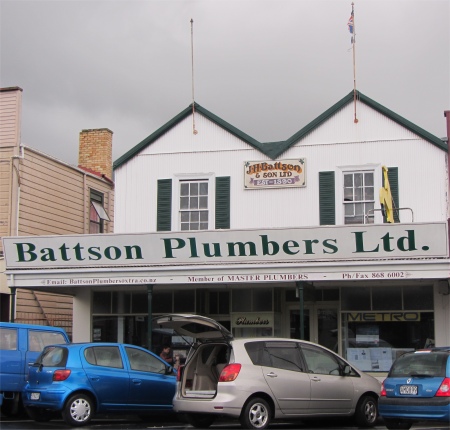 Battson & Sons est. 1890 |
The J.H. Battson & Sons Ltd plumbers shop was built between 1876-1882 for William Newman, tinsmith, ironworker, gas fitter, and plumber - a talented guy by the sounds of it; a Bill of all trades. Fransis Battson was Newman's foreman from 1888 until he bought the business in 1890. It has been owned by the Battson family for four generations, and is believed to be the longest lived plumbing business kept in the same family in New Zealand.
The Brian Boru Hotel was established by Mr Sainsbury (my God that guy gets everywhere) in 1867, the year the goldfield opened. It was originally known as the Reefers Arms (presumably an association with quartz reefs). A year later it was taken over by Edmond (Ned) Twohill who had arrived in Thames before the gold rush. He renamed it after the 941-1014 A.D. High King of Ireland.
The town's colourful history is still alive in the many pubs, buildings, museums and activities found in the area. To gain an insight into the town's gold-mining history, I headed to the School of Mines and Mine and Mineralogical Museum. This was one of the country's thirty schools of mines used to provide practical instruction to a growing mining population.
A woman gave me a guided tour around the various buildings, "All extensions added over time," she told me. This was a fine example of a school, with classrooms, laboratories, small foundry, model room and a separate concrete building housing a fully comprehensive collection of fossils, rocks and minerals.
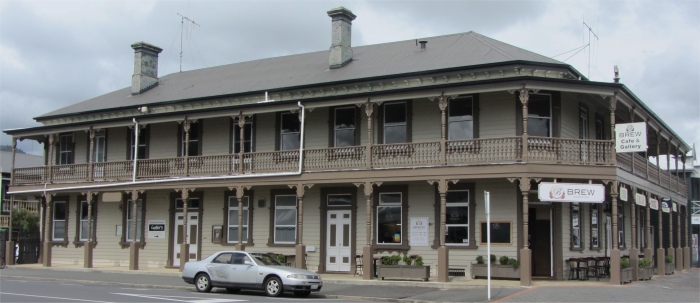 Brian Boru Hotel |
The 1901 Syllabus showed the school provided courses in: Mining and Applied Mechanics (including drainage, explosives, ventilation, hauling and winding), Land and Mine Surveying, Metallurgy of Gold and Silver, Practical Assaying (dry and wet), Practical and Theoretical Chemistry, General and Mining Geology, Mineralogy and Blowpipe Determination, Mathematics, Drawing, Practical Astronomy, Petrology and Physics. Phew!
"Why Practical Astronomy?" I asked the woman. She had no idea neither. "My ancestors were miners, but I don't think they received any training such as this," I commented. The woman responded by telling me, "The government realised that a lot of gold was being wasted and ending up in the silt out at sea. They invested in this training in order to supress ignorance and boost productivity."
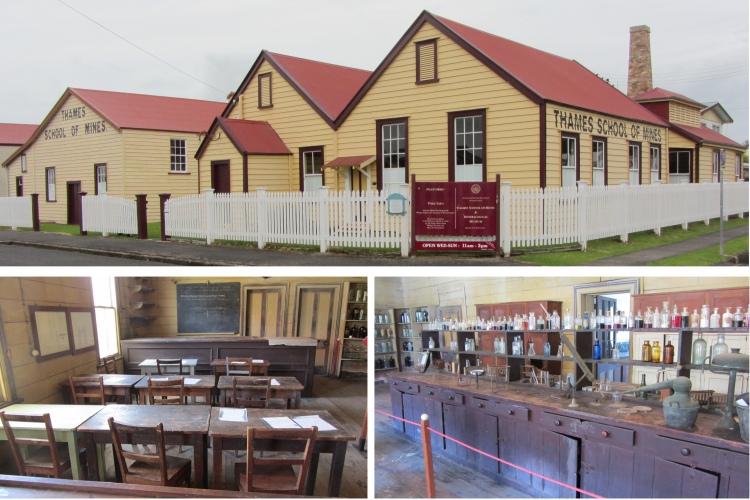 School of Mines and Mine and Mineralogical Museum |
Saturday science lectures were delivered each week, free, to the pupils of the State and high schools, and prizes were awarded for regular attendance and proficiency at the annual examination. The school finally closed in 1954, and was passed over to the Thames Borough Council.
I thanked the woman for the excellent tour, and pondering on the question of why a young woman was doing the tour as opposed to the usual octogenarian, I asked, "How did you get to run a museum like this, and are you the only curator?" She found that amusing and laughed out loud. "I have a degree in geology, so I have the credentials," she told me. "I'm not the only volunteer, there are two blokes as well. One specialises in mining, the other in gold, so depending on who you find here on the day, you'd get a totally different tour," That's always the case I guess.
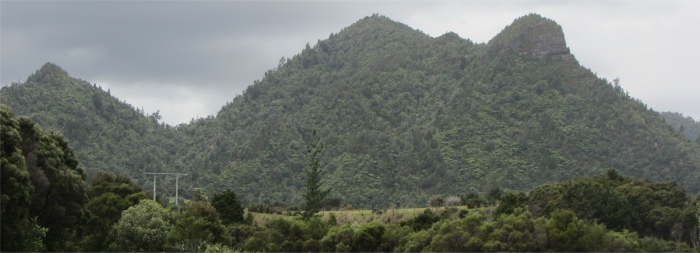 Kauaeranga Valley |
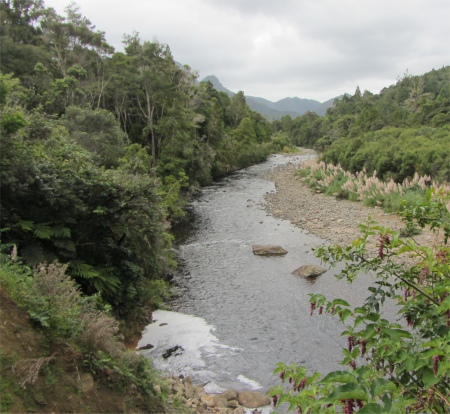 Kauaeranga River up the Valley |
The Kauaeranga Valley was once filled with magnificent kauri trees. From the 1870s to the 1920s, this area was extensively logged for its kauri. At first the easier slopes near Thames were logged and the kauri milled locally. During the 1890s the kauri timber industry slumped and many local mills closed down. Around 1910 the industry revived and plans were made to extract the remaining stands of timber in the rugged area above Kauaeranga Gorge.
In the main river valley and its tributaries, contractors worked from bush camps supplied by packhorse track. Using axe, saw and timber jack, they felled thousands of massive trees, which were trimmed, cut to length and transported to streams, and rivers via log chutes or along skidded roads. Dams were built in the valley and often tripped in sequence to send timber down the river. A display board at the Kauaeranga Valley visitor centre mentioned that only 20% of the timber survived crashing down from the dams, the remainder was smashed to smithereens. This led to the development of tramlines to move logs.
By 1928 most of the kauri had been logged. The tramlines were pulled up and the dams, bush camps and other relics fell into ruin as Kauaeranga forests slowly recovered. In 1970 the remaining native forests of the Kauaeranga were protected as part of the Coromandel Forest Park.
With the inclement weather and the risk of finding slips on the tracks, I decided to forego the pleasures of hiking in this delightful valley. Reluctantly, I headed back to town.

